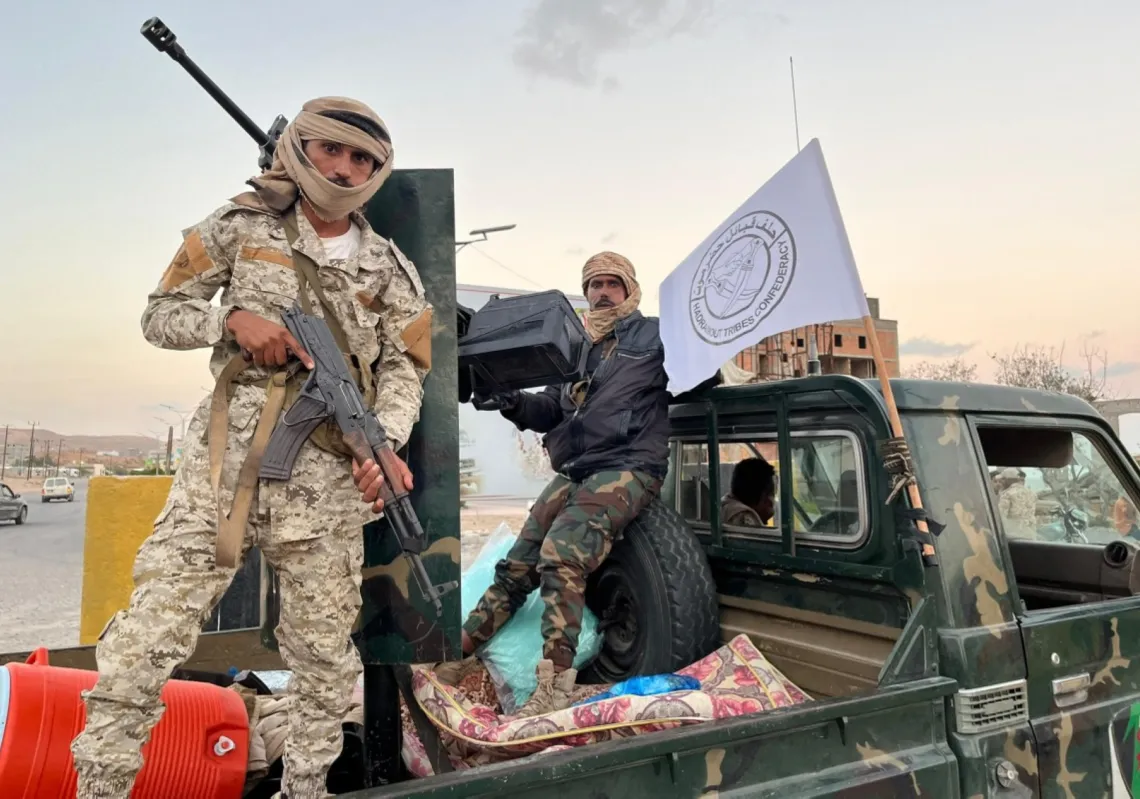 Members and vehicles of the Al-Qaaqa brigade from Zintan get ready to vacate the premises of their Tripoli quarter on November 21, 2013, as part of a government decision to remove militias from the capital and eventually integrate them into the security forces, after a weekend of deadly clashes between militiamen and residents. (MAHMUD TURKIA/AFP/Getty Images)[/caption]
Members and vehicles of the Al-Qaaqa brigade from Zintan get ready to vacate the premises of their Tripoli quarter on November 21, 2013, as part of a government decision to remove militias from the capital and eventually integrate them into the security forces, after a weekend of deadly clashes between militiamen and residents. (MAHMUD TURKIA/AFP/Getty Images)[/caption]
Libya’s ongoing militia violence came to a head when a militia from the western city of Misrata opened fire on a group of anti-militia protesters two weeks ago. That militia had been camped out in the Libyan capital, Tripoli, and residents of the city who had grown tired of their presence took to the streets to demand the militia’s departure. Anti-militia sentiment has been building up in the past year in Libya. The militias, armed to the hilt with AK-47s and anti-aircraft weapons, have asserted control over various parts of the country through violence, pressing for power for their region—in this case, in Misrata. Residents of the Libyan capital, fed up with the Misratan brigades occupying the city and quarreling with local militias, organized a demonstration against them. It turned violent, and more than forty people were killed in the ensuing onslaught.
This is one of three examples that characterize post-revolutionary politics in Libya. The second is the siege of the lucrative oil fields in the east by Benghazi militias. (Under Gaddafi, Benghazi saw very little of the oil wealth it produced due to the centralization of government.) Many Libyans in this part of the country fear being marginalized by the new government, and thus have rallied behind a movement calling for a decentralized federal government. Local militias and protesters took over oil terminals to pressure the General National Congress for greater representation and local leaders announced autonomy from the Tripoli government.
Third are the Amazighi protesters in the Nafusa Mountains south of Tripoli, who have taken a cue from the Benghazi autonomists and asserted control over the oil and gas pipelines in the region. Their demands echoed those of their eastern counterparts: greater representation in the General National Congress. The Amazigh—who suffered persecution under the Gaddafi administration—are also calling for the recognition of Tamazight (an Amazighi language) as a national language. Their blockade caused blackouts in Tripoli in the last week of November.
Libya has none of the sectarianism that divides other Middle Eastern populations. But in the wake of the civil war, militant regionalism has emerged as a powerfully divisive force in the country. Under Italian colonization, the country was split into three provinces: Cyrenaica in the east, Tripolitania in the west and Fezzan in the south. Italy instituted policies that privileged one region over the other, but even after unification under Gaddafi, the regime continued to exacerbate tensions between the former colonial provinces, marginalizing the east and centralizing government in the west. These hostilities have now manifested themselves in the contemporary factionalist politics currently disrupting the democratization project.
The militias have played a large part in this unrest. Many of the militias identify themselves by the city or neighborhood they come from. They were briefly united during the civil war by the common goal of toppling Gaddafi, but now they represent only the interests of their respective cities and have repeatedly refused to be subsumed into a national army. Though many of them receive government salaries, they operate largely outside its purview. In addition, the militias have clashed with each other in efforts to protect their territories, further inflaming regionalist tensions.
But there have been more auspicious developments as well. After the bloody anti-militia protests two weeks ago, many of the out-of-town militias made a decision to decamp from the Tripoli. The Amazighi protesters also suspended their two-week siege of the oil terminal, out of compassion for the residents of Tripoli. These two acts may represent, in some small way, the beginning of serious reconciliation efforts.
All views expressed in this blog post are those of the author and do not necessarily represent the views of, and should not be attributed to, The Majalla magazine.









